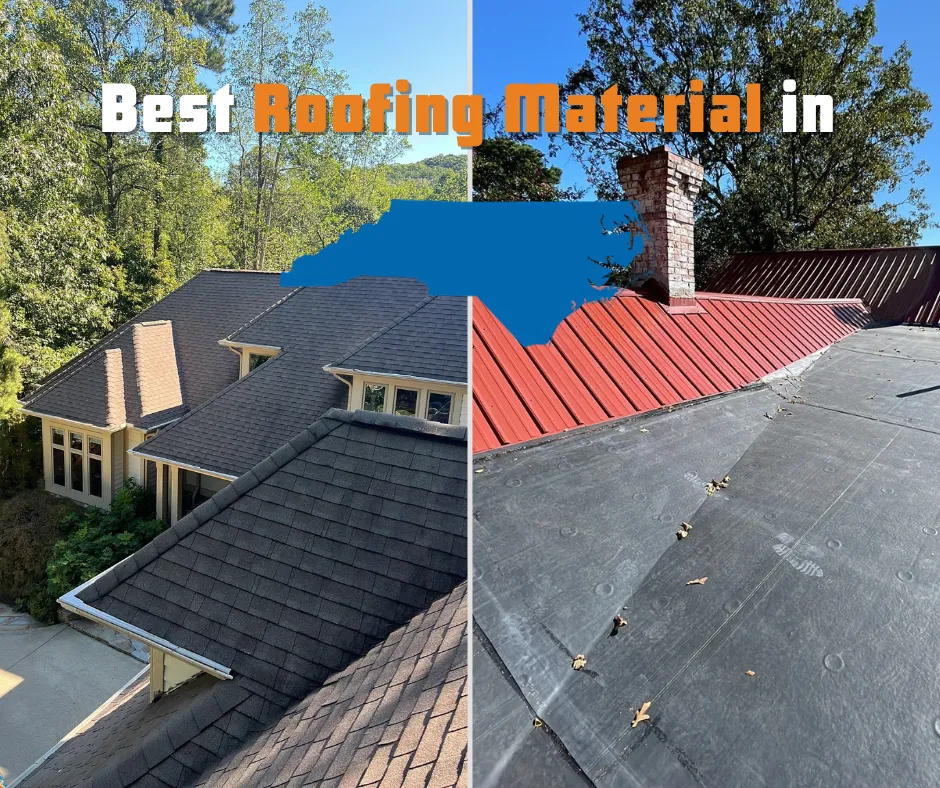Expert Roofing Tips for Picking the very best Materials for Your Home's Requirements
When it comes to choosing the appropriate roofing materials for your home, an organized method is important. Key factors to consider include recognizing your regional environment, evaluating the durability of various products, and assessing energy performance.
Examining Your Environment Problems

When selecting roofing materials, it is critical to take into consideration the details climate conditions of your location, as these elements considerably affect the durability and performance of your roofing system. Various environments pose distinct challenges, such as high winds, heavy snowfall, extreme warmth, or too much humidity. Comprehending these elements is important for making a notified choice.
As an example, in areas prone to heavy rain or snow, products like metal or asphalt tiles with high waterproofing capabilities might be more suitable. On the other hand, in areas with heats, reflective materials such as floor tiles or awesome roofing systems can help in reducing heat absorption, resulting in power effectiveness and enhanced interior comfort.
Furthermore, think about regional wind patterns; products that can endure high winds, like impact-resistant shingles or concrete tiles, are crucial in hurricane-prone locations. Humidity levels additionally contribute; in damp climates, decide for products immune to mold and mold, such as synthetic underlayment or treated wood.
Eventually, examining your environment conditions will assist ensure that you select roof materials that not only boost your home's visual appeal however additionally provide durability and security versus environmental stressors. Roofing Lockhart.
Understanding Product Sturdiness
Analyzing climate problems is only the primary step in making an educated roof covering choice; comprehending the resilience of the products is equally important. The long life and efficiency of roof covering materials can differ dramatically, influenced by aspects such as climate exposure, upkeep requirements, and product make-up.

Moreover, take into consideration the product's resistance to components like rainfall, wind, and hail storm. As an example, impact-resistant roof shingles and metal roofing systems are better suited for regions susceptible to extreme tornados. Furthermore, the product's capacity to hold up against UV exposure is vital for maintaining visual appeals and protecting against premature degradation.
Ultimately, picking long lasting materials not only adds to the durability of your roof covering however also decreases the demand for frequent repair work or substitutes, making sure comfort and protecting your investment with time. Assess sturdiness together with environment considerations to make one of the most informed option for your roof covering project.
Energy Performance Considerations
Energy effectiveness plays a crucial function in roof choices, influencing both regular monthly power bills and general ecological influence. Selecting the best roof covering materials can significantly decrease a home's energy usage by enhancing insulation and showing sunlight.
One of the vital elements to think about is the roofing product's thermal performance. Roofing Lockhart. Products such as metal, clay ceramic tiles, and certain sorts of shingles are understood for their ability to show solar power, lowering warm absorption and, subsequently, cooling expenses. Amazing roof covering options, which are made to reflect even more sunshine than standard roofings, can better improve power look what i found efficiency, particularly in warmer environments
Additionally, the insulation residential properties of roofing materials can influence warmth retention throughout cooler months. Products with a higher R-value supply better insulation, minimizing the demand for heating and adding to lower power expenses.
It is additionally vital to think about the roof's color and texture, as lighter shades typically use far better reflectivity compared to darker shades. By very carefully examining these elements, property owners can make enlightened choices that not only improve energy effectiveness however likewise add to lasting sustainability and convenience in their living setting.
Budgeting for Roof Covering Materials
Budgeting for roofing materials requires careful consideration and planning to guarantee a balance between quality and cost. The very the original source first step in this process is to establish a clear budget based upon your total economic capacities and the specifics of your roof covering task. It is important to analyze the overall location of the roofing, as this will directly impact the amount of product required and, as a result, the overall cost.
Next, study the different kinds of roof materials available, noting their rate arrays and toughness. While some materials may have a reduced first expense, they could need more constant fixings or substitutes, causing higher long-term expenditures. On the other hand, investing in higher-quality products may generate far better energy performance and long life, eventually conserving money over time.
In addition, think about labor costs, which can dramatically influence the overall spending plan. Obtain numerous quotes from reputable service providers to make sure competitive prices. It may be valuable to set apart a contingency fund-- commonly around 10% of the total spending plan-- to cover unexpected costs that might arise throughout the installment process. By thoughtfully budgeting for roofing products, homeowners can make educated choices that straighten with their long-lasting demands and economic goals.
Aesthetic and Design Choices
Selecting roofing products surpasses plain capability; visual and layout options play a considerable function in improving the general allure of a home. The roofing is a popular attribute that adds to the building style and visual charm of a home. When picking products, take into consideration exactly how they enhance the home's outside, including exterior siding, windows, and landscape.
Shade is a crucial aspect; it can either balance with or contrast the home's combination. Lighter colors can make a home show up larger and much more welcoming, while darker tones can impart style and warmth. Texture additionally matters; as an example, slate provides an innovative, classic look, while metal roof can offer a sleek, contemporary aesthetic.
Particular materials may be far better suited for particular layouts; for instance, clay ceramic tiles function well on Mediterranean-style homes, whereas asphalt tiles are much more functional. Ultimately, the chosen roof product need to reflect the house owner's individual design while making sure resilience and efficiency.

Conclusion
In recap, choosing suitable roofing materials demands a thorough evaluation of environment problems, material sturdiness, energy effectiveness, and budget considerations. Inevitably, notified decisions in the roofing option process contribute to a practical and sustainable home setting (Roofing Lockhart).
When it comes to choosing the best roof covering products for your home, an organized technique is necessary.When choosing roofing try these out products, it is important to consider the details environment conditions of your location, as these elements substantially influence the long life and efficiency of your roof. By attentively budgeting for roof covering materials, house owners can make informed decisions that align with their economic goals and lasting demands.
Picking roof materials goes beyond simple capability; visual and layout options play a significant function in enhancing the general allure of a home.In summary, selecting ideal roofing materials demands a detailed assessment of environment problems, material longevity, energy effectiveness, and budget considerations.
 Rick Moranis Then & Now!
Rick Moranis Then & Now! Rider Strong Then & Now!
Rider Strong Then & Now! Alicia Silverstone Then & Now!
Alicia Silverstone Then & Now! Jenna Jameson Then & Now!
Jenna Jameson Then & Now! Macaulay Culkin Then & Now!
Macaulay Culkin Then & Now!